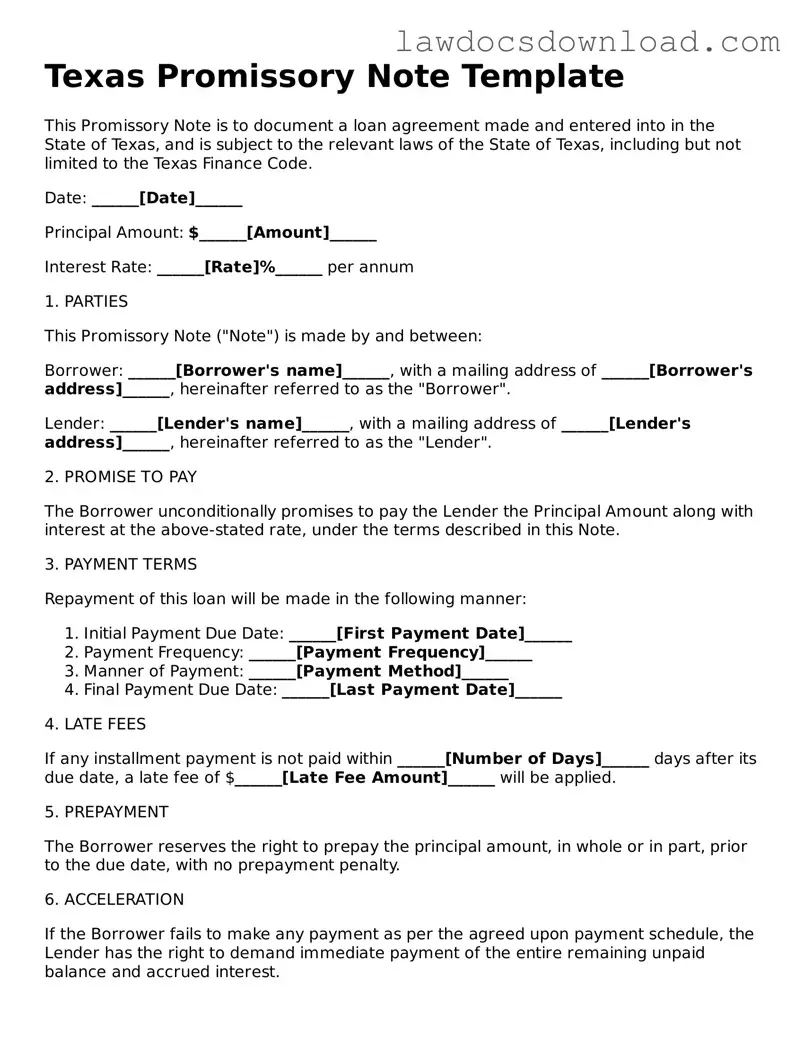Texas Promissory Note Template
This Promissory Note is to document a loan agreement made and entered into in the State of Texas, and is subject to the relevant laws of the State of Texas, including but not limited to the Texas Finance Code.
Date: ______[Date]______
Principal Amount: $______[Amount]______
Interest Rate: ______[Rate]%______ per annum
1. PARTIES
This Promissory Note ("Note") is made by and between:
Borrower: ______[Borrower's name]______, with a mailing address of ______[Borrower's address]______, hereinafter referred to as the "Borrower".
Lender: ______[Lender's name]______, with a mailing address of ______[Lender's address]______, hereinafter referred to as the "Lender".
2. PROMISE TO PAY
The Borrower unconditionally promises to pay the Lender the Principal Amount along with interest at the above-stated rate, under the terms described in this Note.
3. PAYMENT TERMS
Repayment of this loan will be made in the following manner:
- Initial Payment Due Date: ______[First Payment Date]______
- Payment Frequency: ______[Payment Frequency]______
- Manner of Payment: ______[Payment Method]______
- Final Payment Due Date: ______[Last Payment Date]______
4. LATE FEES
If any installment payment is not paid within ______[Number of Days]______ days after its due date, a late fee of $______[Late Fee Amount]______ will be applied.
5. PREPAYMENT
The Borrower reserves the right to prepay the principal amount, in whole or in part, prior to the due date, with no prepayment penalty.
6. ACCELERATION
If the Borrower fails to make any payment as per the agreed upon payment schedule, the Lender has the right to demand immediate payment of the entire remaining unpaid balance and accrued interest.
7. GOVERNING LAW
This Note shall be governed under the laws of the State of Texas without regard to its conflict of law provisions.
8. SIGNATURES
This Note must be signed by both parties to be effective.
Borrower's Signature: ______[Borrower's Signature]______
Date: ______[Date of Borrower's Signature]______
Lender's Signature: ______[Lender's Signature]______
Date: ______[Date of Lender's Signature]______
